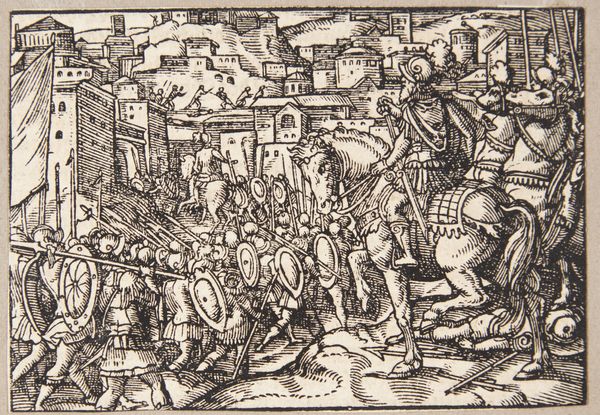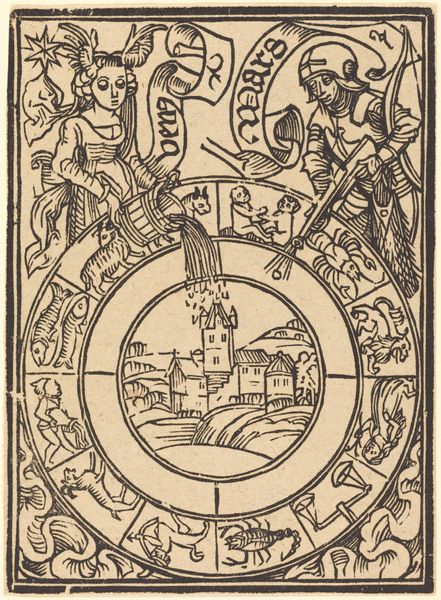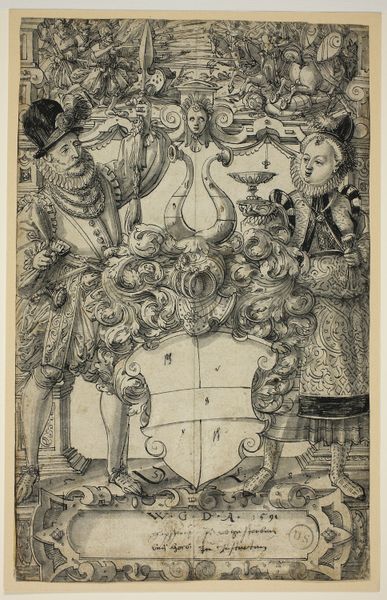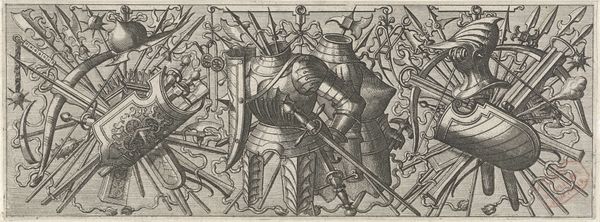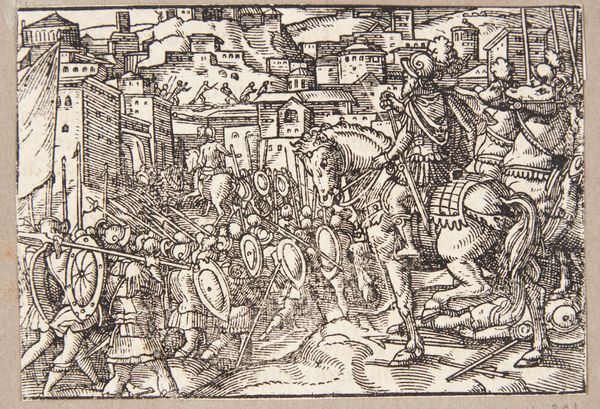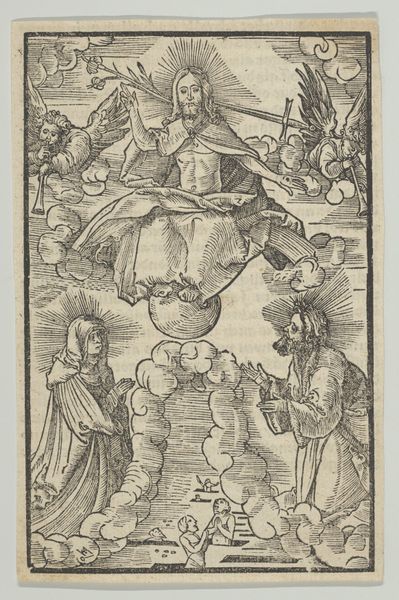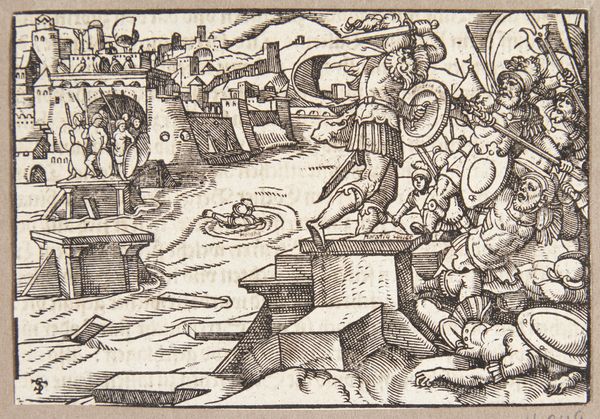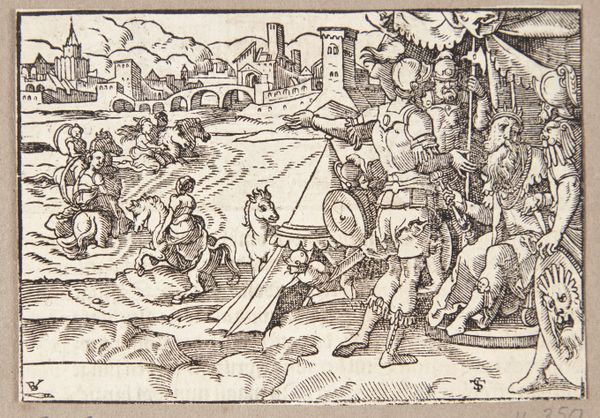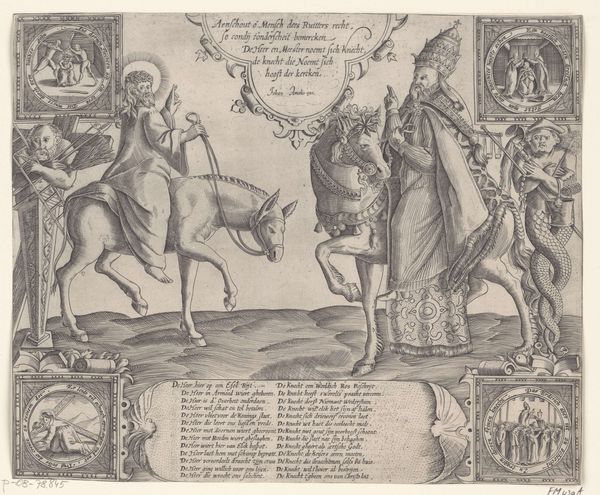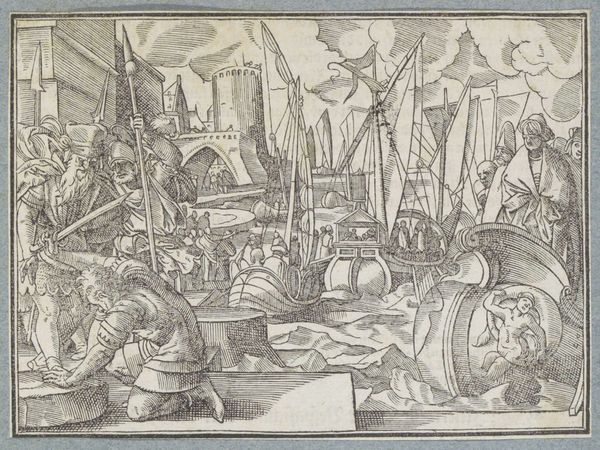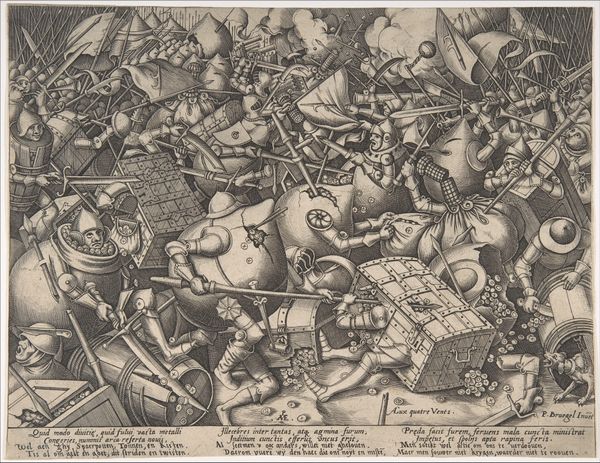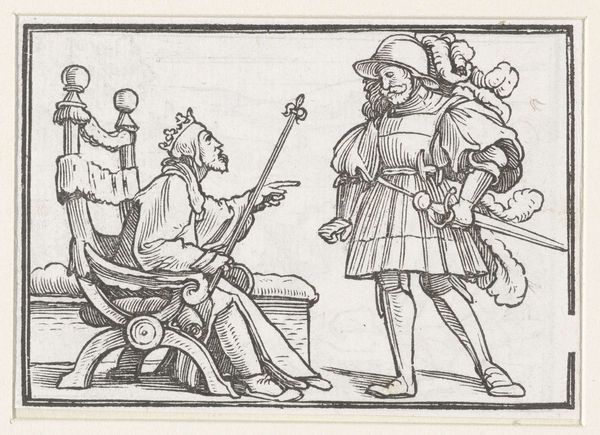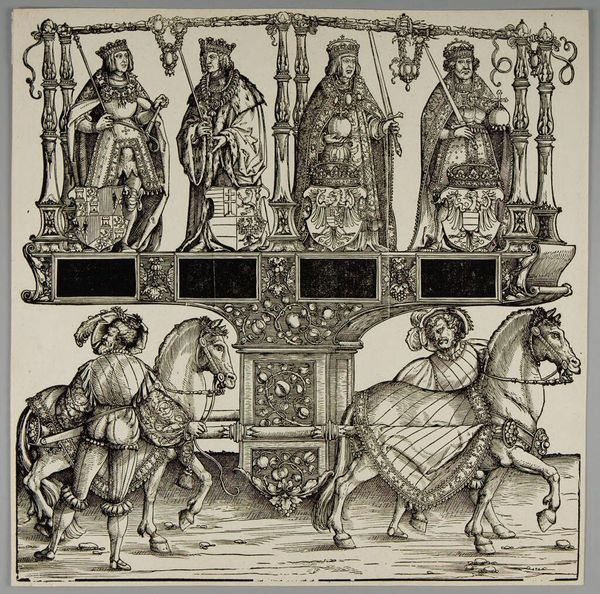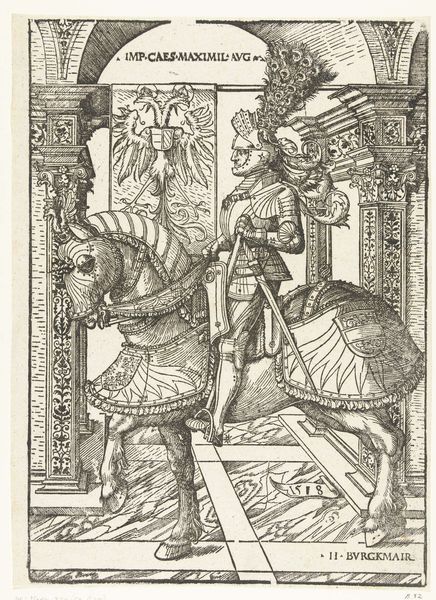
drawing, print, ink, engraving
#
portrait
#
drawing
#
medieval
#
pen drawing
# print
#
pen illustration
#
pen sketch
#
ink line art
#
11_renaissance
#
ink
#
history-painting
#
engraving
Dimensions: height 75 mm, width 182 mm
Copyright: Rijks Museum: Open Domain
Editor: Here we have an engraving from 1531 entitled "Karel V en Ferdinand I". It's anonymous, rendered in ink, and currently residing at the Rijksmuseum. It features two crowned figures and what seems like several coats of arms. I find the precision of the line work impressive given the small scale and the amount of symbolic weight the piece seems to carry. What can you tell me about it? Curator: This print speaks volumes about the politics of imagery and the Holy Roman Empire. Notice how Charles V, on the left, and Ferdinand I are framed, literally, by their imperial symbols, underscoring their authority. It is not a coincidence to have included all these crests on the bottom; they illustrate the complex and layered jurisdictions across different regions under Imperial rule. Editor: So, it's meant to be a visual declaration of power? How was this image likely circulated, given the historical context? Curator: Exactly. Prints like these were mass-produced, relatively speaking, making them accessible propaganda tools. Consider the social and religious upheavals of the Reformation era. Images became crucial in shaping public opinion and solidifying the Emperor's legitimacy. It was cheaper and quicker to make lots of engravings like this, for circulation in the public, than oil paintings for rich people's galleries. This puts it into perspective, right? Editor: Definitely! It’s amazing to think of this image as a kind of early form of political poster. Thanks so much for elaborating on this! Curator: My pleasure. Reflecting on its public role really transforms how we see its artistic choices.
Comments
No comments
Be the first to comment and join the conversation on the ultimate creative platform.
